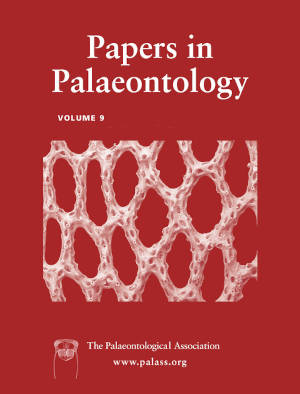Article: Cryptic moulting behaviour of some Carboniferous Ostracoda
Publication: Papers in Palaeontology
Volume:
9
Part:
4
Publication Date:
2023
Article number:
e1519
Author(s):
Ewa Olempska, David J.C. Mundy, and Michał Zatoń
DOI:
10.1002/spp2.1519
Abstract
Abstract Monospecific accumulations of ostracods, represented by spine-bearing Janischewskya? sp. and a smooth-shelled Cavellina? sp., were detected inside the body chamber, siphuncle and camerae of three cephalopod specimens (a nautiloid and two goniatites) from the Carboniferous (Mississippian) Cracoean reefs of North Yorkshire, UK. The ostracods occur as isolated valves packed together and are well-preserved, with delicate spines of Janischewskya? sp. still intact on numerous specimens. Such a mode of ostracod preservation inside the cephalopod conchs and their paucity in the surrounding matrix outside the shells indicate that the valves were not concentrated due to sedimentary processes. Rather, the ostracods deliberately entered the empty cephalopod shells in order to seek sheltered habitats for moulting. In the case of the smooth-shelled Cavellina? sp., the ostracod valves preserved inside a camera of the nautiloid have similar size, indicating that a synchronized mass moulting took place in this species. Additionally, the presence of putative eggs closely associated with the spine-bearing Janischewskya? sp. valves inside a siphuncle of the nautiloid shows that the empty conchs could have also served as safe places for egg deposition. The present finds are thus the first examples of cryptic moulting behaviour in ostracods. They also imply that such behaviour in this group of arthropods has a long evolutionary history, at least since the Carboniferous, and potentially may persist in present day ostracods.
